The Australian Outback is an extensive, empty region which makes up about 70% of Australia, and is a must for bold travelers. Rough landscapes, ancient rocks and animals make touring the Outback an experience you will not find elsewhere.
This enormous area reflects the spirit of the country with its cultural history and natural beauty. Every corner of the Outback can be a new adventure see Uluru in red or Karijini gorges in black – for all those looking for an unforgettable journey.
The biggest thing about touring the Outback is just how freeing and connected you feel to nature it is. As cities spread into other regions of the world the Outback remains a wilderness sanctuary. Its isolation from big cities and tech dependencies enables travelers to disconnect from the modern world for some time and reconnect with nature’s raw, unspoiled beauty.
The Outback’s tranquil desert landscapes because of their gum trees and waterholes offer a feeling of self-reflection not found elsewhere. Also in the Outback are a few of the only ecosystems and species to have evolved to live here, so wildlife fans and nature photographers can see rare Australian animals in the wild.
We will check out a few of the key learnings from touring the Australian Outback further down this page. We are going to show you how to get around this large area – including popular sights and hidden gems – to get an idea of the Outback.
We will also discuss the cultural history and spiritual significance of the Outback as well as Indigenous history. Whether you are planning a road trip down the red dirt roads or just settling down under the Outback’s peaceful night skies, this article should give you ideas for your own Outback adventure. Expect rugged charm and magnificent beauty of the Australian Outback.
The Key Takeaways.
1. The Australian Outback is an untamed and vast wilderness with Aboriginal culture and wildlife.
2. Tourists need to be ready and informed prior to venturing out into the Outback, carrying water, emergency communications and navigation gear because the region is arid and remote.
3. Exploring the Outback involves planning your journey and knowing when you should travel as extreme temperatures and weather aren’t always possible, particularly in summer months.
4. Engaging with Aboriginal communities to learn their ancient culture, traditions and customs is a crucial component of any Outback trip.
5. It’s still isolated but the Australian Outback can be accessed by guided tours, self-drive and luxury train trips – depending on your tastes and budget.
How to Tour the Australian Outback: The Complete Guide.
1. Planning Your Trip.
Planning your journey through the Australian Outback is important before you go. Consider the length of your stay, best time to visit and regions to go to. Read up on weather conditions, hazards and permits along your route. Plan your itinerary ahead of time and reserve accommodations and guided tours well in advance.
2. Selecting the Right Mode of Transport.
In the Australian Outback where distances between attractions and amenities can be great, selecting the right mode of transportation is important. You can rent a car, sign up for a guided tour or even go 4WD camping for the day – based on your budget and preference. Consider the benefits and drawbacks of each choice and how comfortable, convenient and flexible it is.
3. Packing Essentials.
Packing the right essentials before you travel through the Australian Outback can make all of the difference. Include lightweight, breathable clothes for the Outback’s diverse weather and temperatures. Pack a wide brimmed hat, sunscreen, bug repellent, sturdy walking boots, a first aider kit and drinking water and snacks. Also carry maps, navigation systems, spare tires and tools in the event of emergency.
4. Outback Landmarks – Exploring Iconic Outback Landmarks.
A few landmarks in the Australian Outback are worth a visit. Visit Uluru at sunrise or sunset to watch the color change of the red rock formation. Find out about Kata Tjuta – a group of massive rock formations close to Uluru – and its cultural significance. Explore the MacDonnell Ranges, Purnululu Park with its Bungle Bungle Range and Katherine Gorge.
5. Immerse Yourself in Aboriginal Culture.
Learn about Aboriginal culture as you tour the Australian Outback. Visit indigenous cultural centres and take guided tours or workshops with Aboriginal guides. Learn about their ancient traditions, Dreamtime stories and art forms. Respect cultural customs, ask for permission prior to entering sacred sites and do not leave a trace.
6. Camping/Accommodations.
Camping under the stars is the essence of the Outback. There are lots of campsites and caravan parks throughout the region – from the simplest to the far more luxurious. If camping isn’t something you like, there are eco-lodges, motels, and hotels available. Research and make reservations ahead of time, particularly during peak tourist seasons.
7. Precautions for Safety.
Safety is paramount when exploring the Australian Outback. Know the emergency procedures and have a communication device in the event of an emergency. Inform someone of your travel plans, share a schedule and check-in frequently. Watch for weather forecasts, stick to road safety rules & speed limits & watch for wildlife on the highways. Bring enough food, fuel and water, plus additional medication if necessary.
8. Respect for the Environment.
Exploring the Australian Outback is vital to safeguard its fragile ecosystem. Discard waste correctly, don’t litter and make use of designated camping areas – leave no trace of your visit. Respect wildlife by avoiding them no matter what – keep a safe distance and don’t feed or disturb them. Respect any guidelines or restrictions in protected areas to safeguard the Outback’s natural beauty for future and present generations.
Tips for Exploring the Aussie Outback.
- Ensure you have sufficient gas and a thoroughly clean vehicle prior to taking long journeys.
- Bring a GPS device or paper maps – cellular phone coverage is usually spotty in remote places. Keep hydrated with water in hot weather.
- Wear clothing which shields you from the sun, sunscreen and seek shade when necessary.
- Respect the Aboriginal cultural customs and traditions and request permission prior to entering sacred sites.
- Watch out for wildlife – kangaroo along with other animals – that might cross roads unknowingly.
- Check travel advisories & road conditions before you leave – several routes are impassable at some times of the year.
- Have a complete first aid kit and basic first aid skills for emergencies.
Frequently Asked Questions.
1. Is it safe to visit the Australian Outback?
Certainly, the Australian Outback is fairly safe. But always plan ahead. Understand the weather, bring food and water, and tell somebody about your travel plans.
2. Best time to visit the Australian Outback?
The Australian Outback is better explored during the cooler months from April to September. The weather is more pleasant and you can avoid the severe heatwaves during this time.
3. Are there guided tours of the Australian Outback?
Yes there are numerous guided tours of the Australian Outback. These tours have experienced guides who know the terrain so you can really feel safe and enjoy the tour.
4. Where should you visit in the Australian Outback?
Some must see destinations in the Australian Outback are Uluru Kata Tjuta, Kings Canyon, Simpson Desert & Kakadu National Park and the Great Barrier Reef. Each has its very own landscapes, culture and natural beauty.
5. What must I take with me on a visit to the Aussie Outback?
Packing for the Australian Outback: sunscreen, hat, sunglasses, hiking boots, insect repellent, first aid kit, map, additional water and nonperishable food. Remote areas need to be prepared.
6. Could I camp out there in the Australian Outback?
Camping is a pastime in the Australian Outback, yes. There are many camping sites and caravan parks in the Outback region. But always check for permits and obey any regulations or fire restrictions.
7. What animals tend to be harmful in the Australian Outback?
The Australian Outback consists of some quite unusual and potentially dangerous animals like snakes, spiders and crocs. Be aware and careful of your surroundings. Follow safety guidelines and do not approach or even feed wild animals.
8. Can I visit the Australian Outback on the cheap?
Definitely! Accommodation and attractions in the Australian Outback are budget friendly. Camping, hostel stays and low-cost or free hikes, national park visits and community events are all good choices.
9. What medical facilities do you have in the Australian Outback?
Though healthcare facilities are sparse in remote parts of the Australian Outback, medical centres or clinics are often established in nearby cities. Take basic medical supplies and travel insurance for emergency medical care.
10. Can I use my mobile phone for communications in the Australian Outback?
Mobile phone coverage could be nonexistent or poor in a lot of the Australian Outback. It’s recommended you carry a satellite phone or two way radio for communications. Inform someone of your communications plan and check coverage ahead of time.
Final Thoughts.
You can tour the Australian Outback and connect with nature, experience Indigenous culture and see some spectacular landscapes. You need to plan your trip, respect the environment and understand the challenges of remote travel.
In case you stick to these guidelines, prepare yourself and respect the Outback as it is – you can enjoy a memorable and safe experience. Explore the majesty and peace of the Australian Outback with its history and natural wonders.


